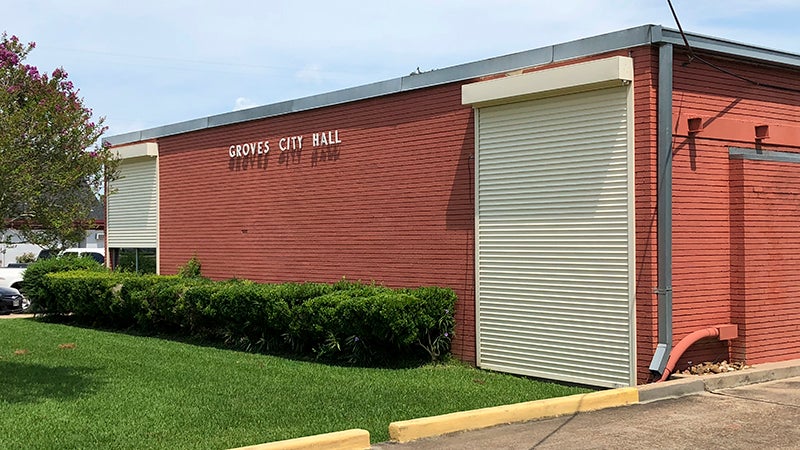Groves budget shows increase in values, decrease in tax rate
Published 12:29 am Thursday, August 20, 2020
|
Getting your Trinity Audio player ready...
|
GROVES — The City of Groves scheduled a public hearing for 5 p.m. Aug. 31 to discuss the Fiscal Year 2020-21 budget and tax ordinance.
City Manager D.E. Sosa gave a budget presentation at this week’s city council meeting to highlight the city’s biggest changes.
The city’s general fund is predicted to be $11,052,710, which increased from last year’s budget by $356,300.
Sosa said the increase comes from personnel, street maintenance and drainage projects.
City employees are eligible to receive a 5 percent step increase.
“Everybody is on a salary plan, which has eight steps and basically the city will either give the cost of living or the step increase,” Sosa said. “Most of our employees are mid-step, so if the council approves they will see an increase in their salaries.”
Last year’s employees received a 3 percent cost-of-living bump.
Sosa said traditionally the city does one or the other.
“That’s what we like to do if we can afford it; however, in 2018 we froze salaries,” he said. “In 2019, we did a cost-of-living. This year we are asking for a step increase.”
The raise accounts for $256,300 of the budget increase.
Sosa said it would have been higher except the city was able to eliminate 1.5 positions in the budget covering $90,000 of the wage increase.
Mayor Brad Bailey said he is glad to see city employees getting a raise.
“They work so hard and as we all know this is the new normal,” he said. “This helps alleviate some of the stress they’ve been under. I think it shows that we care about our employees.”
The remaining $100,000 belongs to an increase in street and drainage, which went from $700,000 to $800,000.
“In our street program we are going to be doing curbs, more asphalt and keep doing chip seal,” Sosa said. “On top of that we have General Land Office, or GLO, money that we will be spending shortly in the amount of $3 million for street projects. We want to put as much focus as we can on streets and drainage.”
The city’s street and drainage budget has more than tripled in the last four years.
Bailey said the council is trying to get the streets back in shape.
“If we can get our life expectancy on the roads from three years to five years or even eight years, then we are making the right decision,” he said. “Putting more money in it gives the council options to look at different ways that we can have roads repaired and resurfaced.
“I don’t think they are ever going to be through working on the roads. It’s just one of those things that will never be perfect, but I do believe they will be better for everyone.”
Sosa said while there are no changes in the garbage fund, the city is asking for a change in water and sewer funds.
The current base water rate is $11 for water and $11.25 for sewer. Residents may see a dollar increase in the water and a 75 cent increase in the sewer base rate to make both costs an even $12.
“All these new toilets and low flow shower faucets people have been working, which is good for people, but it costs us a certain amount of money to operate the system regardless of how much water is sold,” he said. “People just aren’t using water like they used to.”
Previous budgets assumed a 7,000-gallon average consumption. New data shows average water consumption is closer to 5,000 gallons.
Another major change is in the tax value.
The Jefferson County Appraisal District has estimated the 2020-21 net taxable values to be $822,611,319, a $44,519,614 increase from 2019-20.
This will bring the current tax rate of 76.16 cents to 74.91 cents per $100 of valuation.
Sosa said the new state regulation has capped revenue increases at 3.5 percent of last year’s revenue. In order to stay under the cap, the city has lowered the tax rate by 1.25 cents.
The M&O rate will be recommended at 68.03 cents and I&S rate at 6.88 cents.
New or expanding Groves businesses will also see a change next year with a limit in Economic Development Center, or EDC, funds.
“Since we are going to propose to use our EDC sales tax to pay for the new fire station, we are going to curb our economic development program by about 75 percent,” Sosa said. “We usually have about $100,000 for grants and incentives, but because a majority of that will be paid for debt service for that station, that service will be capped at $25,000.”
City officials will hold a public hearing on all items before setting an approval date.






